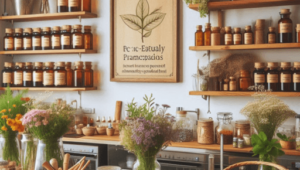Where is Bee Balm Made: Unveiling the Origins of a Remarkable Plant
In the world of botanical wonders, few plants captivate as much as bee balm. Also known by its scientific name Monarda didyma, bee balm is a vibrant and aromatic herb that has enchanted gardeners, herbalists, and nature enthusiasts for centuries. From its captivating appearance to its diverse uses, bee balm stands as a testament to the beauty and potential that nature provides. In this article, we embark on a journey to explore the origins of bee balm and the places it calls home. Let’s delve into the lush landscapes where bee balm is made.
As the sun-kissed petals of bee balm sway gently in the breeze, one cannot help but wonder about the origins of this captivating plant. From its striking appearance to its myriad uses, bee balm has a rich history that spans across continents and cultures. Join us as we trace the journey of bee balm from its native North America to its global popularity today.
The Eclectic World of Bee Balm
Bee balm, with its radiant clusters of tubular flowers, has found its way into gardens, landscapes, and hearts around the world. Its vibrant hues of red, pink, and purple, coupled with its distinct aroma, make it a favorite among gardeners and pollinators alike. But where does this remarkable plant come from?
A Glimpse into Native North America
Bee balm’s story begins in the woodlands and meadows of North America. Indigenous tribes across this region have revered bee balm for generations, harnessing its healing properties and using it in traditional medicine. The vibrant blossoms attracted not only humans but also hummingbirds, butterflies, and bees, forming intricate ecological relationships.
Bee Balm’s Spirited Spread to Europe
The 18th century marked a significant turning point for bee balm, as European explorers and botanists marveled at its beauty and utility. They brought it across the Atlantic, introducing it to European gardens and spurring its popularity worldwide. Bee balm’s journey continued as it adapted to new environments, captivating people with its versatility.
Cultivation in Modern Times
Today, bee balm is cultivated across the globe. Its popularity is attributed to both its ornamental value and its various practical applications. Gardeners cherish it for its ability to attract pollinators and its striking appearance. Additionally, the plant’s leaves and flowers are infused in teas and used in culinary creations, adding a unique flavor profile.
The Enchanting Aroma and Culinary Uses
One of bee balm’s most intriguing characteristics is its aromatic quality. The leaves release a fragrant citrusy scent when touched, making it a delightful addition to culinary endeavors. In the kitchen, bee balm finds its way into teas, salads, jellies, and even cocktails, tantalizing taste buds with its unique essence.
Bee Balm’s Medicinal and Therapeutic Applications
Beyond its culinary allure, bee balm boasts a range of medicinal benefits. Traditional healers have used it to address ailments such as colds, digestive issues, and skin irritations. Modern herbalists continue to explore its potential in promoting overall well-being and addressing contemporary health concerns.
Inviting Pollinators into the Garden
Gardeners recognize bee balm as a pollinator magnet. Bees, hummingbirds, and butterflies are drawn to its nectar-rich blooms, supporting essential pollination processes. By cultivating bee balm, individuals contribute to the preservation of these vital species and the biodiversity of their surroundings.
Landscaping with Bee Balm
Bee balm’s allure extends beyond its practical uses. Its tall, vibrant flowers add vertical interest to landscapes, while its ability to form dense clumps makes it an excellent choice for borders and naturalistic plantings. Whether in formal gardens or wildflower meadows, bee balm lends its captivating charm.
Preserving Bee Balm: Drying and Oil Infusions
To enjoy bee balm beyond its growing season, many enthusiasts turn to preservation methods. Drying the leaves and flowers allows for year-round use in teas and sachets, while infusing them in oil creates a base for salves and balms that capture the plant’s therapeutic properties.
Bee Balm’s Role in Ecosystems
Bee balm’s importance goes beyond aesthetics and human uses. Its role in supporting pollinators enhances ecosystem health and resilience. By planting bee balm, individuals play a part in creating havens for beneficial insects and fostering balanced ecosystems.
Bee Balm Varieties: Exploring Diverse Species
The world of bee balm is teeming with diversity. Various species and cultivars offer a range of colors, sizes, and growth habits. Gardeners can explore this diversity to find the perfect bee balm for their garden’s unique characteristics and their personal preferences.
Embracing Bee Balm: Gardening and Beyond
Whether you’re an avid gardener, an herbal enthusiast, or simply someone who appreciates nature’s wonders, bee balm has something to offer. Its vibrant presence and versatile nature make it an excellent addition to gardens, kitchen cupboards, and holistic wellness routines.
Challenges in Bee Balm Cultivation
While bee balm is relatively resilient, it’s not without its challenges. Pests, diseases, and environmental conditions can impact its growth. Understanding these potential issues and implementing proactive measures is essential for ensuring the health and vitality of your bee balm plants.
In the ever-evolving tapestry of nature, bee balm stands as a testament to the interconnectedness of cultures and ecosystems. From its origins in Native North America to its global prominence, bee balm continues to inspire awe and appreciation. As we cultivate, preserve, and admire this remarkable plant, let us also remember our role in nurturing the delicate balance of the natural world.













Post Comment
You must be logged in to post a comment.